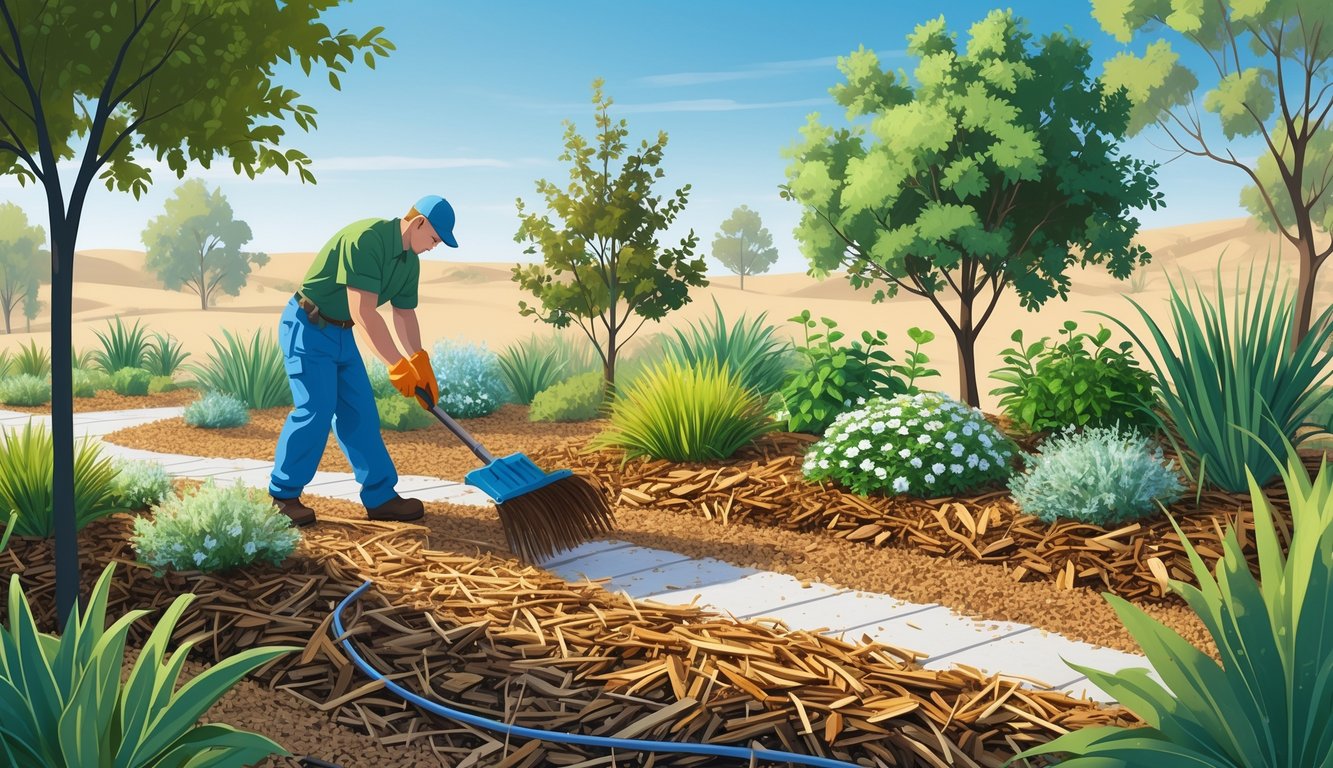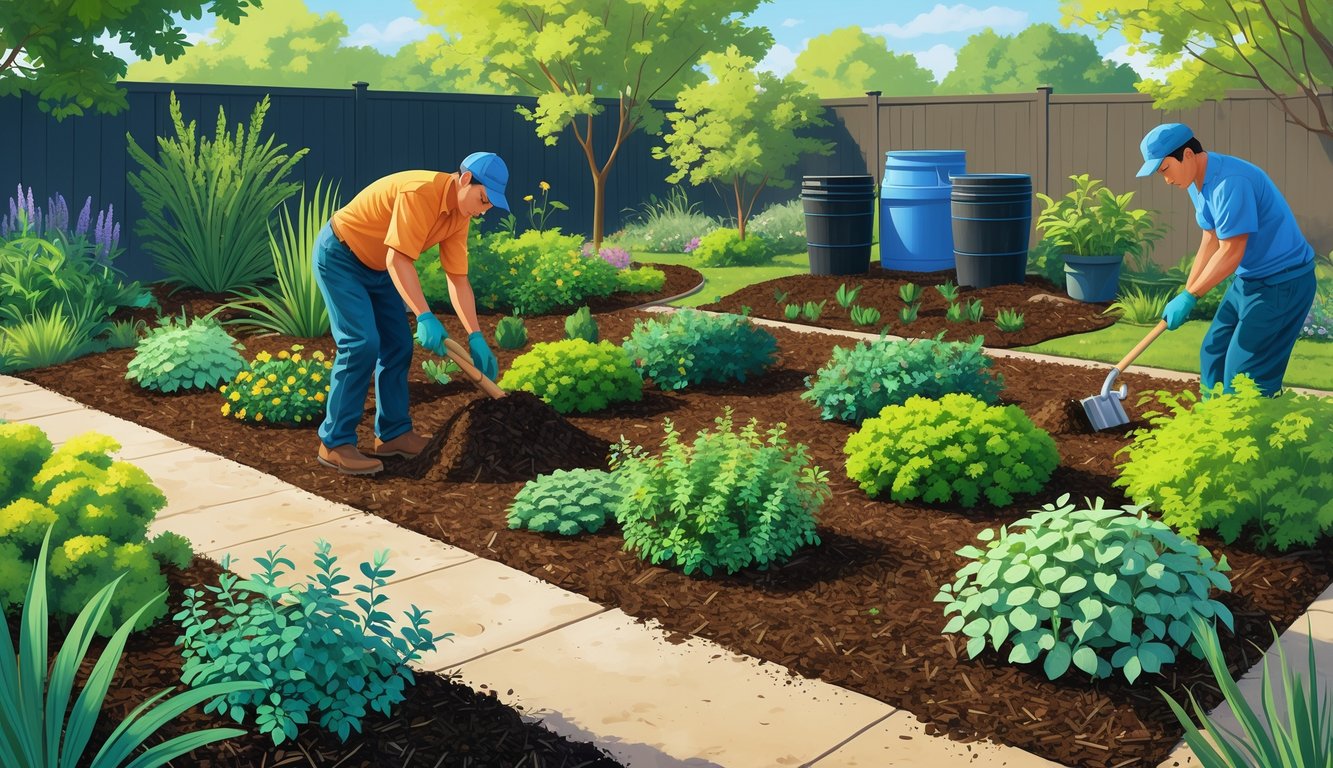
Promoting Healthy Plant and Soil Ecosystems

Nobody warned me mulch would turn my sad, patchy garden into this weird, half-wild science project. I thought I was just dumping bark and grass clippings, but now the soil’s alive. Like, worms everywhere, and stuff I don’t even want to name. I guess that’s what “biodiversity” means? Whatever, it’s working.
Boosting Soil Microbial Activity and Nutrient Cycling
I started with kitchen scraps, which honestly smelled terrible, but the microbes went wild. Not kidding, the USDA claims more microbes means better soil (I googled it when my compost started fizzing). All those layers—leaves, wood chips, whatever I could scrounge—just fed the little guys. Suddenly, earthworms tunneled under my perennials, and the tomatoes didn’t drown when it rained for a week straight. Supposedly, worm castings are free fertilizer. I mean, it’s worm poop, but I’ll take it. My neighbor still buys bagged mulch because “yard waste is messy.” Fine, more worms for me.
Enhancing Soil Temperature Regulation
Every summer, I’d lose half my new plants to some wild temperature swing—either a heatwave or a freak cold snap. Mulch, even just grass clippings, actually helped. I read somewhere (maybe here) that two inches can drop soil temps by ten degrees. I don’t know if it’s ten, but my cilantro didn’t shrivel, so that’s something.
The insulation just buys time, which is all I really want. My plants survive heatwaves and weird cold spells. If only it worked for my AC bill. Honestly, it’s not about precision. It’s “please don’t die, please don’t fry,” and that’s good enough for me.
Encouraging Biodiversity in the Landscape
I used to just toss one kind of bark everywhere, but then I accidentally dumped a mess of leaves, pine straw, and whatever else was in the bag. Suddenly, the ground was crawling with beetles, ants, pill bugs—some things I’d rather not meet at night. Apparently, ecologists say mixed mulch is better. I even caught a bee nesting in the straw. When I quit raking up every last leaf, birds and weird little predators started showing up. Nobody mentions bats, which is a shame, but I swear, less bare dirt means more life—most of it not cute, but it’s still life.
Integrated Weed and Pest Management with Mulching
Weeds: I hate them. They show up everywhere, no matter what. Mulch isn’t magic, but it’s the closest thing I’ve got. If I time it right and use enough, I win. If I slack off, it’s chaos. Sometimes I get cocky and skip a spot, and then it’s back to pulling crabgrass at 7am.
Organic Mulching for Weed Control
Bark chips don’t sound impressive, but a thick layer actually stops weeds—at least for a while. I pile up 2–4 inches of whatever I have, and even bindweed slows down. Go thin, though, and it’s over. Sometimes I double up with groundcovers like creeping thyme and actually get a break. Compost is nice, but in this case, it’s just about smothering. UC’s IPM folks say mulch plus other weed prevention keeps things under control. If you think you can just dump mulch on crabgrass and walk away, good luck.
Mulch Selection to Minimize Pest Attraction
If you think all mulch keeps bugs away, let me tell you about the year earwigs took over. Unfinished compost and cocoa hulls? Ants, gnats, the works. I switched to cedar and pine bark, and things improved. Bugs care about texture, moisture, and pH—who knew? Landscape fabric doesn’t fool rodents, and plastic just cooks the roots if it’s hot. My advice: chips over leaves, and keep mulch away from the house so termites don’t move in. There’s a whole section on pest-specific mulch, but honestly, most of my problems were from ignoring local advice.
Preventing and Addressing Weed Growth
Weeds will punch through any lazy mulch job, including frayed landscape fabric. Smothering bare soil immediately after planting sometimes works, sometimes doesn’t—depends on the rain. I rake back mulch and catch seedlings with a cultivator, which saves me from disaster every spring.
Nobody told me dandelion and nutsedge would just muscle through mulch if you let them go to seed. It takes constant disturbance and the occasional vinegar spritz (don’t expect miracles—mulch does the heavy lifting). I joke that pulling a weed when you see it is the “integrated” part of Integrated Pest Management. Mulch smothers, but I still need gloves. Skip edging for a week, and grass sneaks back—relentless.
If you want actual tactics, there are better guides than me. If you find a mulch that means you never pull weeds again, don’t tell me—I’ll just get jealous.
Advanced Strategies: Xeriscaping and Sustainable Solutions
Runoff in my boots again. Mulch gets everywhere, and if one more person calls gravel “low-maintenance,” I’ll scream. Xeriscaping sounds easy, but it’s a slog. Drought keeps getting worse. Smart landscapers (sometimes me, sometimes not) use targeted mulch and rain garden patches, but clients always ask what “ecosystem service” even means. Spoiler: it’s not just about saving water or mowing—it’s about stuff you can actually measure, supposedly.
Integrating Mulch into Xeriscape Designs
Every xeriscape job, I get asked, “How much mulch is too much?” I saw a yard buried under six inches once—nothing survived except the weeds. Colorado State says 2–4 inches, and keep it away from trunks. Pests are smarter than people, apparently.
It’s not just dumping chips everywhere. Placement matters. Done right, it blocks weeds, slows evaporation (tenfold, supposedly), and keeps the soil from frying. Using local mulch is better for the soil, or so Dakota County claims—I half-believe them. The choice—bark, straw, stone—actually matters. Bad mulch, more water lost. Best clients let me do compost under bark, which the worms love.
Ecosystem Services of Rain Gardens and Mulched Beds
Rain gardens used to sound like a fad. City rebates got me into it, but then pollinators tripled on a client’s slope, so maybe there’s something to it. It’s never perfect—dogs dig up the beds, and maintenance is a pain.
What nobody says: mulched rain gardens do way more than look pretty. Engineers hype them for filtering runoff before it hits the creek. I met one who quoted USGS data for hours. With deep roots and thick mulch, my crew barely waters the beds. But try explaining that you need to refresh the mulch every year—no matter what the bag says. Forestry mulching isn’t the same thing, either. Those machines just shred invasives after construction. Real sustainability is living mulch, not machine-chopped debris pretending to be soil.